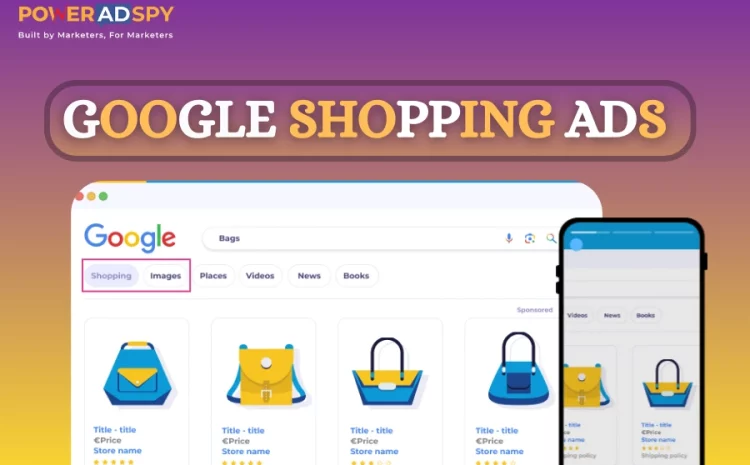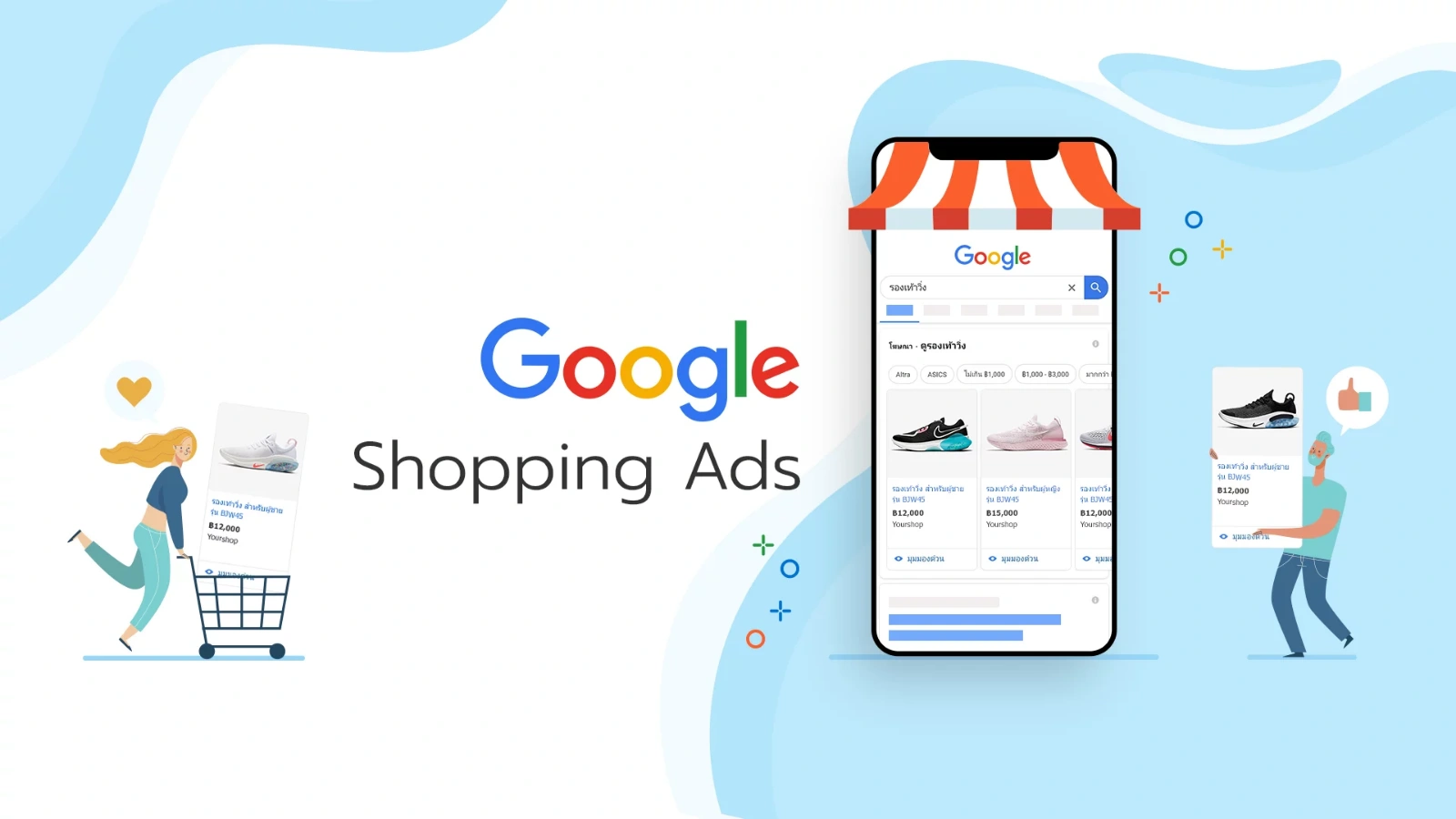How To Use Google Shopping Ads To Boost Sales?
Shoppers don’t always search for a brand; they search for what they need. Google Shopping Ads place your products right in front of those high-intent buyers at the exact moment they’re looking. These visual ads do more than just display your product; they give users price comparisons, reviews, and brand insights without needing to click through multiple pages. That kind of clarity drives better click-through rates and stronger purchase intent.
In this guide, you’ll explore how Google Shopping Ads work, why they matter, how to set them up, and how tools like PowerAdSpy and ad intelligence platforms help you get ahead. Whether you’re launching a new product or scaling an existing line, these strategies put you in control of performance and profitability.
Listen To The Podcast Now!
What Are Google Shopping Ads And How Do They Work?
Google Shopping Ads appear when users search for products directly on Google. These ads showcase product images, prices, brand names, and store information in a visual format at the top of the search results. Unlike text ads, Google Shopping Ads display key product details upfront, which makes comparison easier for users.
You need to connect your Google Merchant Center account to Google Ads. Upload your product feed to Merchant Center, then create campaigns inside Google Ads. The product data you provide determines which searches will trigger your Google Shopping Ads.
Why Should You Advertise On Google Shopping In 2025?
Customers today don’t browse endlessly. They type what they want and choose from the most relevant results. Google Shopping Ads appear when someone looks for a specific product, which means you’re reaching people with high purchase intent.
More businesses now advertise on Google Shopping because the return on investment is often higher than traditional search ads. These campaigns are visual, accurate, and reliable. With mobile searches growing every year, showcasing your products visually makes them easier to understand and trust.
Key Benefits Of Running Shopping Ads On Google For Your Products
Google Shopping Ads help brands outperform competitors in several ways:
1. Showcase Products Visually
Unlike text-based ads, Google Shopping Ads highlight your products using rich visuals including images, pricing, product titles, and brand names. This visual layout gives buyers a clear first impression even before clicking.
Images build trust quickly and reduce hesitation, especially when paired with product reviews and ratings. For mobile users, a visual product feed is far easier to browse than plain search results. As a result, visually-driven listings often generate higher engagement and conversion rates.
2. Reach High-Intent Buyers
Shopping ads appear in response to specific product-related queries, meaning your listings reach customers who are actively looking to buy. This level of targeting ensures your ads are not wasted on irrelevant audiences.
Unlike traditional awareness campaigns, these users already have buying intent, making the conversion path shorter and more cost-effective. You don’t have to convince them they need the product; you just need to show them why yours is the best option. This makes Google Shopping a smart tool for ROI-focused marketers.
3. Appear on Multiple Google Surfaces
Your products aren’t limited to one space; they show across various Google platforms, including Search, YouTube, Gmail, and the Google Display Network. This wide distribution enhances brand visibility across multiple touchpoints.
It also allows your product to follow users throughout their online journey, whether they’re searching, watching videos, or browsing articles. This omnipresence helps build familiarity and trust with your brand, increasing the chance of conversion even if the buyer doesn’t act on the first click.
4. Control Budget and Bidding
With Shopping Ads, you stay in control of how much you spend and what your return looks like. You can adjust bids at the product level and set different priorities for campaigns based on goals.
This means you can allocate more budget to high-performing products or cut back on underperforming ones, all without pausing your entire campaign. Combined with automated bidding strategies, advertisers can optimize spending while focusing on profitability.
5. Access Real-Time Insights
Google provides deep analytics that allow you to measure the effectiveness of every product listing. You can monitor impressions, click-through rates, conversion metrics, and even the performance of individual SKUs.
These insights help you test and refine your ad strategy continuously. For instance, if a product gets clicks but no sales, it may need a new image or price adjustment. This data-driven approach reduces guesswork and ensures your ad spend is always working toward better results.
Many e-commerce stores that rely on Google product ads report consistent sales growth month-over-month.
Read More!
How To Optimize Google Ads For Maximum Results?
7 Steps To Create Powerful Campaign With Shopping Ads Spy Tool
Step-By-Step Guide To Setting Up Google Product Ads That Convert
1. Create a Google Merchant Center Account
Start by visiting Google Merchant Center and signing up with your business email. You’ll need to provide your store name, country, and website.
Verify your website by adding a tag or file to your domain. This proves ownership and unlocks full account features. A verified account ensures Google can trust and display your products correctly.
2. Prepare a Product Feed
The product feed is a spreadsheet or data file containing details like product title, price, image, description, availability, and GTIN.
You can manually upload it using a template or connect through platforms like Shopify or WooCommerce. Make sure the information is accurate and follows Google’s product data specifications to avoid disapproval.
3. Link to Google Ads
After your feed is approved in Merchant Center, link the account to Google Ads under “Settings.” This syncs the product data with your ad campaigns.
Once linked, you’ll be able to use product groups directly within your Shopping campaigns. This connection is essential for targeting products and tracking ad performance effectively.
4. Create a Shopping Campaign
In Google Ads, choose “New Campaign” and select “Sales” or “Leads” with “Shopping” as the campaign type. Choose the linked Merchant Center account.
You can opt for Standard Shopping or Performance Max campaigns depending on your goals. Structure your campaign with product groups or custom labels for better control and optimization.
5. Set Targeting and Bidding
Select the regions, devices, and audiences where you want your ads to appear. You can also set bid strategies like Manual CPC or Enhanced CPC.
Tailor your targeting based on where your customers are and how they shop. Higher bids can be assigned to high-margin or best-selling products for better exposure.
6. Launch and Track Results
Once everything is ready, launch the campaign and begin monitoring metrics like CTR, conversions, and ROAS in Google Ads.
Regularly update your product feed with new inventory and optimize based on top performers. Testing images, prices, and descriptions can lead to continuous improvements in ad performance.
Tips To Optimize Product Listings For Better Google Shopping Visibility
You can’t afford to appear on page two. Improve visibility and click-throughs with these proven steps:
1. Use Descriptive Titles
Include brand, color, size, style, and primary keywords people search for. For example, instead of “Running Shoes,” go for “Nike Men’s Running Shoes Black Size 10.”
The more relevant and specific your title, the better Google can match it to user queries. This boosts your chances of appearing in the right searches.
2. Add Multiple Images
Use high-resolution photos showing the product from different angles—front, side, zoomed-in, and lifestyle shots.
Clear visuals build trust and help users make quicker decisions. Google often prioritizes listings with engaging and informative images.
3. Update Stock and Price Daily
Outdated inventory or pricing leads to disapproval and poor user experience. Sync your product feed with real-time inventory tools or update it manually if needed.
Keeping this data fresh helps your ad remain eligible and competitive in real-time auctions.
4. Include Relevant Attributes
Specify product details like material (cotton, leather), gender (unisex, female), pattern (striped, solid), size type, and product category.
These attributes help Google categorize your items better and match them to more refined user searches, improving your product’s reach.
5. Direct to Strong Landing Pages
Make sure every Shopping ad leads to a fast-loading, mobile-friendly product page with accurate information.
Your landing page should include matching product details, pricing, and a clear call-to-action like “Add to Cart.” A seamless user journey increases conversion chances.
Read More!
Unveiling the Power of Google Shopping Ads
Common Mistakes To Avoid When You Advertise On Google Shopping
Avoid these common pitfalls that can severely limit your ad performance and ROI:
- Low-Quality Product Feeds
Incomplete or inaccurate product feeds often lead to disapprovals or poor ad placements. Ensure all essential attributes like product title, description, GTIN, pricing, and availability are filled in correctly and updated regularly. - Weak Titles or Missing Attributes
Using generic or vague titles (like “Nice Shoes”) can prevent your product from appearing in relevant search queries. Always include brand, product type, key features, and variants (color, size, etc.) to improve visibility. - Wrong or Overlapping Categories
Improper categorization of products confuses Google’s algorithm, resulting in your ads being shown to the wrong audience. Assign each product to its most specific and accurate Google Product Category to boost relevancy. - Lack of Negative Keywords
Without negative keywords, your ads might show up for irrelevant searches, leading to wasted ad spend. Regularly review your search terms report and exclude keywords that don’t convert or match your target intent. - No Campaign Monitoring or Optimization
Set-and-forget campaigns rarely succeed. Failing to monitor performance metrics like CTR, conversion rate, and ROAS can lead to missed opportunities and budget waste. Schedule routine checks to pause underperforming products and adjust bids or targeting strategies.
How An Ad Spy Tool Enhances Your Google Shopping Strategy?
You don’t need to guess which ads perform well. Use an ad spy tool to uncover trends and top-performing campaigns from your competitors. These tools help:
- Analyze high-ROI campaigns
- View popular product listings and ad formats
- Understand which visuals and CTAs drive the most action
With these insights, you’ll refine your Google Shopping Ads based on real data, not assumptions. Instead of reinventing the wheel, you build on proven campaigns that already work.
How PowerAdSpy Helps In Creating High-Performing Google Shopping Ads
PowerAdSpy is a powerful ad intelligence tool designed to uncover what works in the competitive world of Google Shopping Ads. Here’s how it helps you craft high-converting campaigns:
- Filter by Ad Positions
Discover where successful ads are being placed, such as the News Feed, Search Results, or Side Panel. Learn which placements attract the most attention and replicate that strategy. - Full Ad Transparency
Click on live ad previews to view complete ad creatives, product listings, and audience interactions. This lets you analyze what real customers are responding to. - Global Ad Data Coverage
Access ad campaigns from over 100 countries. Whether you’re targeting local or international markets, you’ll find high-performing examples tailored to your goals. - Niche and Competitor Tracking
Search by industry-specific keywords or enter a competitor’s domain to view their best-performing Google Shopping Ads. It’s a smart way to stay ahead of the competition. - Bookmark & Organize Winning Ads
Save standout ad creatives and store them in your library for later inspiration. Great for building your swipe file of high-converting ads.
With PowerAdSpy, you’re not guessing you’re learning from what works in real campaigns. Whether you’re refining ad copy, visuals, targeting, or placement, this tool gives you the data you need to build high-performing Google Shopping Ads with confidence.
Using Ad Intelligence Tools To Improve Campaign Performance
Ad intelligence tools show what works. They help you:
- Discover top-performing Google Shopping Ads
- Study trends in layout, keywords, and offers
- Build strategies based on competitors’ winning campaigns
These tools improve your targeting, content quality, and budget decisions. Without one, you operate in the dark. With one, you move faster and smarter than your competition.
Using ad intelligence tools reduces waste, shortens the learning curve, and puts proven success within reach. These tools don’t replace creativity; they sharpen it with actionable direction.
Final Thoughts
Google Shopping Ads give you a smart way to reach serious buyers. When you show the right product at the right time with the right information, conversions follow. It’s not about advertising more. It’s about advertising smarter.
With tools like PowerAdSpy and other ad intelligence platforms, you don’t just launch campaigns; you launch optimized, competitive, and data-driven campaigns. Your competitors already use tools like these. To outperform them, you need the same advantages.
The path to better Google Shopping Ads starts with better data, better visuals, and constant analysis. Begin today, and let your product stand out to the people who are ready to buy.
FAQs
- Are Google Shopping Ads good for small eCommerce businesses?
Yes. Google Shopping Ads are highly effective for small businesses. They connect you with high-intent buyers who are actively searching for products like yours without requiring a massive ad budget. With the right setup, even small stores can compete with larger retailers. - Can I advertise on Google Shopping without a website?
No. To run Google Shopping Ads, you must have a functional website with individual product pages. Google uses your product feed and landing pages to serve and verify Shopping Ads, so a website is essential. - What makes Google Product Ads different from text ads?
Google Product Ads (Shopping Ads) display rich product visuals such as an image, price, brand, and promotional text. In contrast, text ads contain only written copy. Shopping Ads typically receive more engagement because users can see exactly what they’re getting before clicking.










